
Papilio neumoegeni is a species of butterfly in the family Papilionidae. It is endemic to the islands of Sumba in Indonesia.
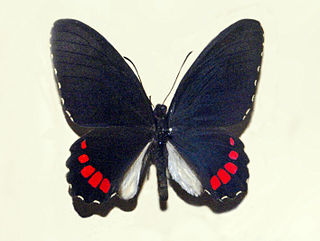
Parides erithalion, the variable cattleheart, is a North and South American butterfly in the family Papilionidae. The species was first described by Jean Baptiste Boisduval in 1836.

Papilio bachus is a butterfly of the family Papilionidae. It is found in South America, including Colombia, Ecuador, Peru, and Bolivia.

Papilio astyalus, the broad-banded swallowtail or Astyalus swallowtail, is a butterfly of the family Papilionidae. It is found from Mexico south to Argentina. It is occasionally reported from southern Texas and rare strays can be found up to southern Arizona and northern Texas.

Papilio torquatus, the torquatus swallowtail, is a swallowtail butterfly in the subfamily Papilioninae. It is found from northern Argentina to Mexico.

Papilio androgeus, the Androgeus swallowtail, queen page, or queen swallowtail, is a Neotropical butterfly of the family Papilionidae. It is found from Mexico to Argentina with a small population in southern Florida.

Papilio cacicus is a Neotropical butterfly of the family Papilionidae first described by Hippolyte Lucas in 1852. It is found in Colombia, Venezuela, Ecuador and Peru.
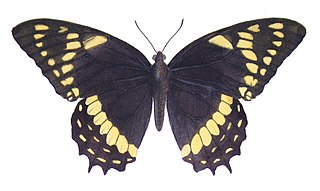
Papilio menatius is a butterfly of the family Papilionidae.

Papilio isidorus is a butterfly of the family Papilionidae (swallowtails). The species was first described by Henry Doubleday in 1846. It is found in Central and South America.

Papilio hyppason is a Neotropical butterfly of the family Papilionidae. It is found in Suriname, Brazil, Bolivia, Peru, Venezuela and Ecuador.

Mimoides ariarathes is a species of butterfly in the family Papilionidae. It is native to South America.
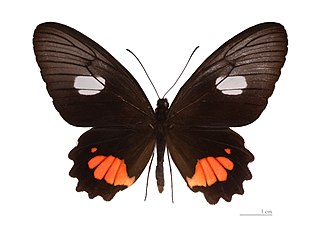
Parides anchises, the Anchises cattleheart, is a species of butterfly in the family Papilionidae native to the Americas. It is common and not threatened. The larvae feed on Aristolochia species including: A. brazilsis, A. bukuti, A. colombiana, A. cymbifera, A. fimbriata, A. inflata, A. macroura, A. odora, A. ringens, and A. triangularis.

Papilio paeon is a species of swallowtail butterfly from the genus Papilio that is found in Ecuador, Peru, Bolivia, Costa Rica, Venezuela and Colombia.

Parides phaleucas is a species of butterfly in the family Papilionidae. It was described by William Chapman Hewitson in 1869. It is found in Ecuador and Peru.
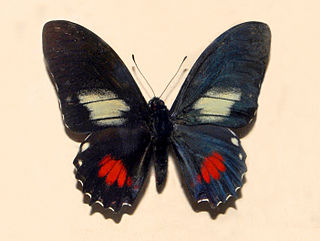
Mimoides euryleon, the false cattleheart swallowtail, is a species of butterfly in the family Papilionidae.

Eurytides serville is a species of butterfly found in the Neotropical realm.

Protesilaus glaucolaus is a species of butterfly found in the Neotropical realm
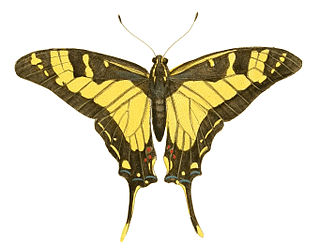
Eurytides thyastes is a species of butterfly found in the Neotropical realm.
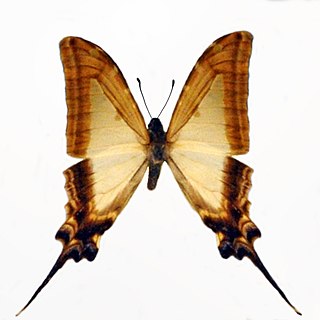
Eurytides leucaspis is a species of butterfly found in the Neotropical realm.

Eurytides dioxippus is a species of butterfly found in the Neotropical realm.




















